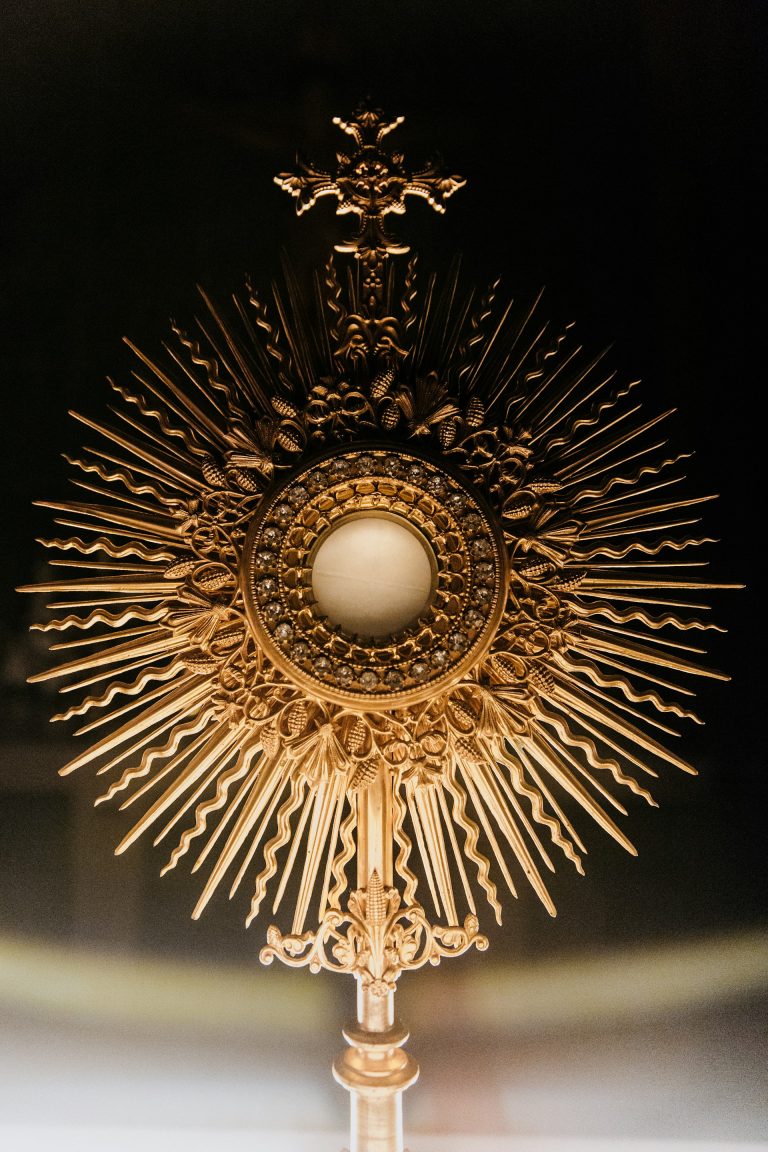Since the beast has seven heads and ten horns, most assume that at least one head must have more than one horn. We may consider the obvious connection between the seven heads and the seven deadly sins. There is one head for Pride, Envy, Greed, Gluttony, Anger, Lust, and Sloth.
What are the ten horns? Each is is a spiritual broadcaster tuned to be the moral/spiritual reverse of one of the Ten Commandments. The horns may not be attached to the heads. Catholic Fundamentalists think that the horns (if we picture them crudely with an earthly counterpart) may move from head to head like the holes of a harmonica, each playing a different set of disconcerting notes for the triumph of Pride, Envy, Greed, Gluttony, Anger, Lust, and Sloth.
Or, the horns may be fixed, carried about on some sort of a bracket similar to that used by a one-man band. The heads move to whichever horn they need to play whatever notes are needed to draw a soul into disobedience and idol worship.
We are tempted into sin by having our desire for a feeling, whether of ownership, victory, satiation, etc., to grow to the point that it overwhelms our ability to obey the Commandment that we are led to violate. For instance, if we find that a neighbor has something we want so badly that we decide to steal it from him, the beast’s head for Envy plays seductively on the horn with the spiritual frequency designed to undermine and erase the importance and validity of “Thou Shalt Not Steal”.
The Commandments were written in stone. In the oppositeness that is thereby symbolized, the justifications for disobeying them are written in wavelengths in the air, through which the tempting tunes are spread to overwhelm the desire to obey He Who programmed all. The notes and rhythms are designed to, within the mind, neutralize and then reverse the urge to obey.
Prayer will neutralize the spiritual wavelengths that are broadcast with the intention of leading us into sin.








